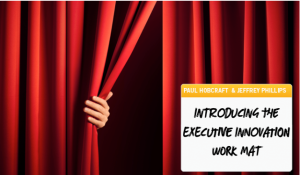We can often be asked “what is the ROI on this particular innovation or alternatively, on our innovating activity?”
This questioning increases particularly when there grows even more uncertainties in marketplaces, when you are forced into making tougher investment decisions, in allocating resources, in adjusting a strategy to meet changing circumstances.
Then you get the “well, what’s the payback period then?”
Often we struggle to offer a half-decent reply as most innovation has stayed mired in incremental approaches and so becomes fairly complicated in identify the new part from the old that is already the invested part, or it remains uncertain, as it is often exploring the unknowns.
Perhaps we should reverse this question or be ready to ‘gazump’ it and beat them to the question before they ask. Two specific ways to think about this come to mind.
The first was suggested in a post back in 2005 by Ruth Ann Hattori called “the cost of not innovating” and I like this one. The other came from a post by my innovating friend and collaborator, Jeffrey Phillips “what are the opportunity costs on not innovating?”
Jeffrey is still not residing on a tropical beach as he still has not got the complete answer to that one. Both are tough questions but well worth reflecting over. Continue reading “What is the missing cost of not innovating?”
